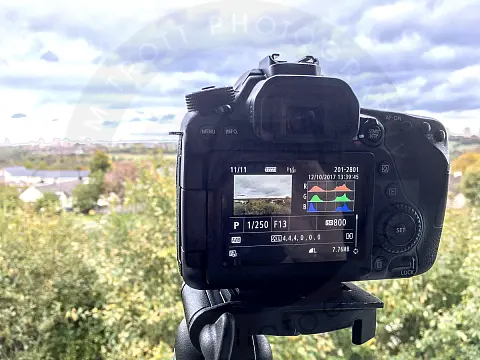Atmospheric Optics - Rainbows, Sundogs and Optical EffectsWe take a look at Atmospheric Optics - Rainbows, Sundogs, and Glories and other optical effects which we can observe and photograph.
Atmospheric optics is a collective name for everything having to do with light and colour in the atmosphere, which includes subjects on the ground.
View my Atmospheric Optics photo gallery!
Rainbows
Everybody is aware of the rainbow. A rainbow is a continual spectrum of colour that appears when light shines onto droplets of rain in the air. These are often observed when the sun shines onto falling rain. Rainbows are caused by the reflection, refraction and dispersion of sunshine within the water droplets.
Sometimes a double rainbow is seen where a fainter mirrored rainbow is observed as a companion to the primary rainbow. On very rare occasions a 3rd rainbow can also be observed, even though these can be very faint.
Moonbows
A moonbow is a rainbow that happens at night time from the light of the moon. They are generally very faint and it is rather difficult to pick out individual colours by eye however can pop out nicely on photographs.
Halos
A circle of brightness occasionally appears around the Sun or Moon caused by ice crystals at high altitudes. Usually, they're too faint to detect colours however reds and blues can be picked up with a camera. The ice crystals in the atmosphere refract light that enters and exits the edges of the crystal.
Sundogs & Moondogs
Sundogs and Moondogs are closely related to halos. Like halos, they're brought about when flat hexagonal ice crystals are present at higher altitudes. Sundogs and Moondogs are formed instead of halos when the atmosphere is turbulent and the crystals are concentrated at the left and right-hand sides of the halo.
Glories
A glory is produced by way of a process very similar to rainbows, however with a part of the sunshine that takes a different set of angles of diffraction, reflection, and refraction as it passes through water droplets.
Cloud Iridescence
Cloud iridescence, also known as irisation, is a colourful optical phenomenon that happens in clouds near the sun or moon. The colours are similar to those seen in soap bubbles and oil on a water surface. It's a type of photometeor. This phenomena is most commonly seen in altocumulus, cirrocumulus, lenticular, and cirrus clouds.
Pillars
Pillars are vertical columns of light which appear when falling ice crystals reflect early morning or late evening sunlight. As they fall, a proportion of them is always aligned to reflect light to the observer.
Fogbows
Unlike rainbows, fogbows are rare since the light source needs to be low behind the observer and the fog mostly in the opposite direction. If the fog is too thick behind the observer, the sunlight or moonlight will be unable to penetrate it and cause the effect.
Noctilucent Clouds
These are clouds at unusually high altitudes, as much as 80 to 90 kilometres high, that glow in the night. At that altitude, they are lit from beneath the horizon by direct sunlight, shortly after sundown or before daybreak. They are most commonly observed in the summertime at latitudes between 50° and 60° north or south of the equator.
Spectre of the Brocken
This effect is named for a peak in the Hartz mountains of Germany where occurrences are common. It is the seemingly enormous shadow of an observer, often witnessed by mountain climbers when their shadow is cast on a cloud or fog so that it is observed hovering over the horizon.
The apparent magnification is an optical illusion brought about when observers compare their shadows on nearby clouds to far-away land objects. Another characteristic of the effect is a halo of coloured rings (a glory) around the shadow's head, caused by the water droplets.
Heiligenschein
Heiligenschein (German for holy glow) is a bright area around the shadow of the observer's head (the anti-solar point). The name calls to mind a technique used on holy figures in Renaissance artwork. Integral to the effect is dew droplets appearing as tiny lenses, focusing the sunlight on the background, and working again as a lens for the backscattered light. Look for the Heiligenschein early in the morning, when the sun is low and your shadow long. Stand so your head's shadow is on wet dewy grass.
Crepuscular Rays
Sometimes sunlight appears as several separate beams of sunshine, generally through holes in the clouds or gaps within the mountains. The beams are parallel but seem to diverge in the same way that parallel railroad tracks seem to emanate from a vanishing point on the horizon. It is an effect of perspective. The rays are brought about by diffraction, reflection and scattering by material within the atmosphere, and by the sharp contrast with the shadowed areas.
Green Flash
This is observed only on very rare occasions when conditions are just right. Chances improve with a very clear-sky sunset on an ocean horizon. The Sun reddens as it's sinking beneath the horizon and all of sudden, the final sliver of the Sun's disk turns emerald green just for a second or two, and then it is gone.
A prism-like refraction by our atmosphere can create a tiny amount of green on the upper limb of the Sun and a lensing effect as it reaches the horizon can magnify it briefly.

_gallery.webp)















